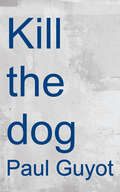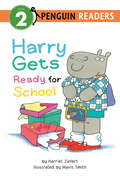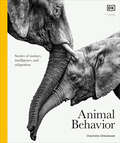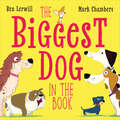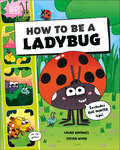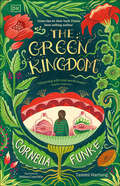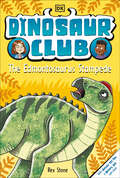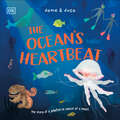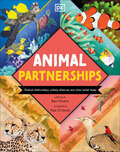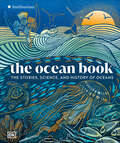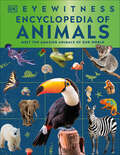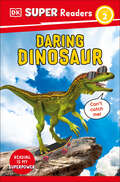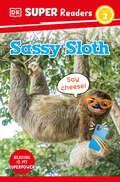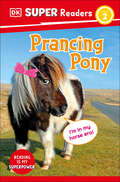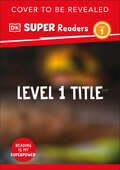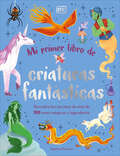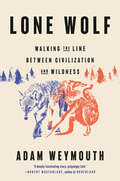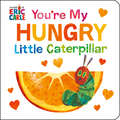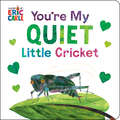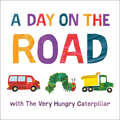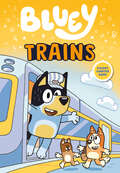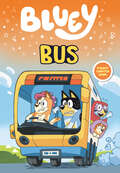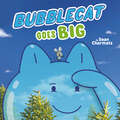- Table View
- List View
Kill the Dog: The First Book on Screenwriting to Tell You the Truth
by Paul GuyotKill the Dog is the first book on screenwriting written by an actual working professional screenwriter. Award-winning screenwriter Paul Guyot exposes the lies other screenwriting books have told, and presents authentic, essential instruction and motivation for anyone wanting a career as a professional screenwriter. This book provides all the answers, from what producers and studios actually want, to what makes one screenplay better than another, to why so many have been doing it wrong for so long. The author takes us inside the exclusive members-only world of professional screenwriters, from television writers rooms to meetings with producers and studio executives, to facts about formatting, structure, craft, art, and voice. <p><p>Every aspect of screenwriting is covered with an authority and credibility never seen in any book to come before. Told with honesty, humor, and vulnerability from the real-world perspective of a working, professional screenwriter, Kill the Dog reveals the secrets of what it takes to have a successful career as a Hollywood screenwriter.
Harry Gets Ready for School (Penguin Young Readers, Level 2)
by Harriet ZiefertEverybody has a lot to do before school starts, and so does Harry. He has to go for a checkup, visit the dentist, get a haircut--and that's only the beginning!
Animal Behavior: Life in the Wild (DK Definitive Visual Encyclopedias)
by DKA thrilling face-to-face encounter with animals in their own environment—their elaborate displays, intimate lives, and extraordinary behavior. Did you know that elephants give each other names, orangutans self-medicate, and rats giggle? Animal Behavior is full of hundreds of stories that shed light on how animals navigate life in the wild. Packed with vivid wildlife photography and action sequences, every aspect of animal life and behavior is explored and explained – from courtship rituals and birth to hunting and death. An initial overview of animal anatomy and physiology reveals the science and biomechanics that underpin animal behavior, while later chapters thematically break down the intricacies of animal feeding, development, communication, intelligence, learning, and other behavioral characteristics. Learn about play through river otters, see socialization among parrots at the riverbank, and catch prey with a fishing spider. Feature panels throughout the book explore the biology behind these traits, introduce case studies from the field, and highlight critical conservation issues facing these animals. Animal Behavior has been created in collaboration with internationally renowned zoologist and TV presenter Charlotte Uhlenbroek and a team of wildlife experts to ensure up-to-date and accurate information.
The Biggest Dog in the Book (Who's the Biggest?)
by Ben LerwillDogs of all shapes and sizes star this delightful book, but which of them is the biggest? From tiny Chihuahua Agnes who loves to burrow beneath cushions, to Holly the Collie, who loves chasing her tail; from Popcorn the Beagle with the very waggly tail, to Poncho the friendly Dalmatian, this book contains a pack of adorable dogs. Each is special in their own way, but which of them is the BIGGEST dog in the book? With a gatefold that opens out to show just how huge the biggest dog is, this gorgeous book compares lots of different dogs, showing how each is lovable in their own way, but only one of them can be the biggest. Written by award-winning author Ben Lerwill and illustrated by prize-winning artist Mark Chambers, this book will appeal to all kids who have a dog, any kid that wants a dog, and everyone who loves animals.
How to Be a Ladybug (How to Be a Bug)
by DKShrink to the size of a garden bug and enter the world of ladybug in this first graphic novel for children.This graphic novel of garden life, made in collaboration with the Royal Entomological Society, is a perfect introduction to ladybugs for bug-obsessed little ones aged 5-7.Follow a newly hatched ladybug as she learns the ins and outs of ladybughood, and meet plenty of fascinating bug characters along the way, in this first graphic novel. Narrated by a wise old grasshopper, offering tips and tricks on how to be a ladybug, children will love to follow the story of Dotty the larva. This bug book for children offers: A graphic novel format to engage children in non fiction topics.Content made in partnership with the Royal Entomological Society providing scientific information about insects.An engaging story about a newly hatched larva, Dotty, as she learns how to navigate life as a ladybug.Our tale begins with a cluster of tiny eggs resting peacefully on a leaf–but life for a ladybug larva is far from peaceful. There are dastardly harlequins to contend with and giant predators in the form of birds. Not to mention the confusing fact that our leading larva doesn’t look anything like a ladybug at all! With transformations to look forward to–including gaining a pair of wings–and plenty of friendly bugs to meet, our heroine will soon learn that life in the garden isn’t all bad.
The Green Kingdom
by Cornelia Funke Tammi HartungCaspia's summer is transformed when she discovers a bundle of letters containing ten plant-based riddles in this enchanting adventure for children ages 10 and up All right, she had to admit it: it really was an adventure to be in a new place. A different Caspia emerged here. A Brooklyn-Caspia, just like the Brooklyn-dandelion. Twelve-year-old Caspia hates big cities, especially New York. So, she isn't thrilled by the news that her parents are taking her to Brooklyn for the whole summer. But everything changes when Caspia discovers a bundle of letters, written by a blind girl many years ago, and hidden in an old chest of drawers. Each letter contains a 'green' riddle, with clues leading to a different plant. Caspia sets out to solve the riddles and, as she does, she meets friends she could never have imagined and finds, to her surprise, that sometimes you can put down roots where you least expect it.
Dinosaur Club: The Edmontosaurus Stampede (Dinosaur Club)
by Rex StoneTravel back in time on a prehistoric journey to the world of the dinosaurs! Dive into an exciting Jurassic world and travel back in time with the Dinosaur Club. These character-driven dinosaur books explore different dinosaur species through a thrilling adventure story for kids aged 5-7.Meet Jamie, a member of the Dinosaur Club. They are a network of kids around the world who love to share dinosaur knowledge, help identify fossils, post dino discoveries, and chat about all things prehistoric. Jamie has just moved to Ammonite Bay, a stretch of coastline famous for its fossils. He is busy exploring when he discovers some dinosaur footprints and is transported back to the time of the dinosaurs! It sounds like Jamie needs some help from the Dinosaur Club when he meets the hungry herbivore Edmontosaurus and gets caught in a stampede!This collection of exciting dinosaur stories features:An introduction to core nonfiction for children aged 5-7 who prefer stories, but are packed with exciting dinosaur facts.Beautifully illustrated line art accompanied by expertly written text.Reference pages to build upon all dinosaur fans’ knowledge about these fascinating prehistoric creatures.All the latest dinosaur information and up-to-date discoveries.Engaging material that reinforces the narrative, including timelines, quizzes, fact files, and glossaries.Dinosaur Club: The Edmontosaurus Stampede will take your child on a Jurassic adventure as they learn about the Edmontosaurus (ed-MONT-oh-SORE-us) dinosaur species through fun facts, timelines, and quizzes. Children will love to learn about the prehistoric world with the Dinosaur Club collection of character-driven adventure stories for fans aged 5-7 years old. More in the seriesAt DK, we believe in the power of discovery.So why stop there? If you like Dinosaur Club: The Edmontosaurus Stampede, then you’ll love other titles in the series. Why not try Dinosaur Club: The T.rex Attack, Saving the Stegosaurus, Avoiding the Allosaurus, and The Compsognathus Chase, and embark on a Jurassic adventure whilst learning about different dinosaur species!
The Ocean's Heartbeat: The Story of a Jellyfish in Search of a Heart
by Dame & DusaThis picture book for young children is about the beauty of every heart and celebrating your own uniqueness.The Ocean’s Heartbeat is a joyous, read-aloud picture book about the uniqueness of every creature's heart for children aged 3-5. Packed with fascinating scientific knowledge, including extra pages about the unique hearts of more amazing creatures, this engaging book shows the incredible diversity of life on Earth and encourages everyone to love how they are different and to celebrate being themselves. This magical picture book for children offers: A whimsical and entertaining narrative that can be shared between parents/caregivers and children.Beautiful, atmospheric collage-style artwork that captures the magic of the jellyfish's journey to find a mysterious heartbeat.An important story that celebrates the diversity of living creatures and encourages children to value their own uniqueness.In the depths of the sea, a jellyfish hears a loud THOOMP. What is this mysterious sound? A wise fish explains that the THOOMP is a heartbeat. The jellyfish listens to the wise fish's soft heartbeat but sadly realizes she has no heartbeat herself, so she swims off to search for it. Along the way, she meets various creatures and learns about their heartbeats, from the seal to the whale to the octopus with three hearts! But why can't she hear her own?
Animal Partnerships: Radical Relationships, Unlikely Alliances, and Other Animal Teams (Wonders of Wildlife )
by Ben HoareDiscover a whole host of partnerships from across the animal kingdom, with the nature enthusiast and best-selling author Ben Hoare.Get acquainted with unexpected animal teams around the world, and find out how these groups thrive in the wild as they defend, feed, and plot with each other in order to survive in this fascinating and unique look at animals.Presenting these unpredictable discoveries, Ben Hoare's friendly, informative explanations are paired with striking photographs and colorful illustrations to make sure every page captivates the imagination. This unique animal book for children offers: Groundbreaking scientific discoveries, including animal behaviors that have only just been documented.Impressive facts about previously unknown animal behaviors that are guaranteed to wow adults and children alike.Animals shown in incredible detail through photographs paired with charming illustration.Animal Partnerships explores cooperative relationships between sea turtles at underwater "cleaning stations" ran by surgeon fish, “bands of brothers” within particular species of big cats, and even cross-species alliances between birds and dolphins that are hungry for a shared meal. Discover how animals and plants depend upon each other to hold their territory, and how even humans have come to develop partnerships with animals all around the world.
The Ocean Book: The Stories, Science, and History of Oceans (DK Nature Books)
by DKImmerse yourself in this beautiful, absorbing guide to the marine world. Earth owes its identity as the blue planet to the vast oceans of water that cover almost 70 percent of its surface. Home to an abundance of marine life and vital in regulating Earth's climate, the oceans are also the scene of daring exploits of exploration, intense rivalries between trading empires, and global warfare. Combining arresting photography; rich illustrations; and engaging, expertly written text, The Ocean Book showcases the landscapes; plants and animals; and captivating human stories of the world's oceans. Whether you're interested in blue whales, the El Nino climate oscillation, the search for the Northwest Passage, the sinking of Titanic, or pirates, this is the perfect exploration of the ocean realm.
Rainforest
by DKGo on an illustrated journey through nature’s unseen habitats in this kids’ book about life under the canopy.Explore the most abundant habitats on Earth, bursting with plants and animals of every shape and size, in this book about rainforests for children aged 9+.Rainforest reveals the dizzying diversity of life in these fascinating forests. Caiman and capybara crowd Amazon riverbanks, ants scare off elephants in the Congo, and birds and butterflies flit through the treetops of Costa Rica. This nature book for children offers: Material that supports the science curriculum in grades 3-5, perfect for nature-loving children and reluctant readers.An in-depth look at Earth’s incredible rainforests and the animals that live there, as well as the different rainforest layers, types, and locations.The fifth title in DK’s wide-format Panorama series featuring 13 striking double-page illustrations, each teeming with life.This illustrated guide lets children discover the incredible diversity of the rainforest. See how mountain gorillas feast on bamboo in Rwanda, bears bound through Alaskan temperate rainforest, and orangutans swing in Indonesia. And of course, none of these would exist without the lush plant life – soaring kapok trees, sturdy teak, and tenacious epiphytes throng the forests. Packed full of iconic animal species, this book shows life on Earth at its most vivid and vibrant.
Eyewitness Encyclopedia of Animals (DK Eyewitness)
by DKExperience the world's most incredible animals in one amazing book.Become an eyewitness to the world’s most amazing animals in this picture-led encyclopedia which will take children aged 9+ on a tour of the marvellous animal kingdom. Like the hugely successful Eyewitness series itself, Eyewitness Encyclopedia of Animals includes every animal topic children want to read about. The world's most amazing animals are here, from tiny ants to the mighty blue whale and soaring eagles to relaxed sloths. Each page is illustrated with jaw-dropping photography and filled with facts and images that are ideal for children aged 9+. This fact-packed animal encyclopedia for children offers: The next book in the new Eyewitness Encyclopedia series, following the epic Eyewitness Encyclopedia of Everything that’s sold over 100,000 copies.Exciting photography, more than 1,500 images, and a clear design, familiar from the rebooted Eyewitness series.Features that are full of facts and stats, quizzes, and interviews with experts, including deep sea explorers and veterinary surgeons, who answer kids' questions about what they do and why they love it.Eyewitness Encyclopedia of Animals introduces the ultimate guide to the wonders of wildlife, from deadly predators to beautiful butterflies, all as you've never seen them before. And meet the experts who study them, from entomologists to zoologists, in absorbing Q&As that explain what they do. With its mix of nerdy knowledge, fun facts, and incredible images, this extraordinary book will keep kids engaged for hours.
DK Super Readers Level 2 Daring Dinosaur (DK Super Readers)
by DKHelp your child power up their reading skills and learn about dinosaurs with this fun-filled nonfiction reader carefully leveled to help children progress.DK Super Readers Level 2: Daring Dinosaur teaches readers all about dinosaurs, with the help of a ditzy daring dinosaur! It is a motivating introduction to using essential nonfiction reading skills, proving ideal for children ready to enter the riveting world of reading. DK Super Readers take children on a journey through the wonderful world of nonfiction: traveling back to the time of dinosaurs, learning more about animals, exploring natural wonders, and more, all while developing vital nonfiction reading skills and progressing from first words to reading confidently. The DK Super Readers series can help your child practice reading by:Covering engaging, motivating, curriculum-aligned topics.Building knowledge while progressing Grades 2 and 3 reading skills.Developing subject vocabulary on topics such as characteristics of dinosaurs. Boosting understanding and retention through comprehension quizzes.Each title, which has been leveled using MetaMetrics®: The Lexile Framework for Reading, integrates science, geography, history, and nature topics so there’s something for all children’s interests. The books and online content perfectly supplement core literacy programs and are mapped to the Common Core Standards. Children will love powering up their nonfiction reading skills and becoming reading heroes.DK Super Readers Level 2 is visually engaging and expands subject knowledge and vocabulary for young readers who want to learn more about the world around them. It is perfect for helping children ages 7 to 9 (Grades 2 and 3) begin to read independently.
DK Super Readers Level 2 Sassy Sloth (DK Super Readers)
by DKHelp your child power up their reading skills and learn about sloths with this fun-filled nonfiction reader carefully leveled to help children progress.DK Super Readers Level 2: Sassy Sloth teaches readers all about sloths, with the help of a hilarious sassy sloth! It is a motivating introduction to using essential nonfiction reading skills, proving ideal for children ready to enter the riveting world of reading. DK Super Readers take children on a journey through the wonderful world of nonfiction: traveling back to the time of dinosaurs, learning more about animals, exploring natural wonders, and more, all while developing vital nonfiction reading skills and progressing from first words to reading confidently. The DK Super Readers series can help your child practice reading by:Covering engaging, motivating, curriculum-aligned topics.Building knowledge while progressing core Grades 2 and 3 reading skills.Developing subject vocabulary on topics such as characteristics of sloths. Boosting understanding and retention through comprehension quizzes.Each title, which has been leveled using MetaMetrics®: The Lexile Framework for Reading, integrates science, geography, history, and nature topics so there’s something for all children’s interests. The books and online content perfectly supplement core literacy programs and are mapped to the Common Core Standards. Children will love powering up their nonfiction reading skills and becoming reading heroes.DK Super Readers Level 2 is visually engaging and expands subject knowledge and vocabulary for young readers who want to learn more about the world around them. It is perfect for helping children ages 7 to 9 (Grades 2 and 3) begin to read independently.
DK Super Readers Level 2 Prancing Pony (DK Super Readers)
by DKHelp your child power up their reading skills and learn about horses and ponies with this fun-filled nonfiction reader carefully leveled to help children progress.DK Super Readers Level 2: Prancing Pony teaches readers all about ponies, with the help of a hilarious naughty pony! It is a motivating introduction to using essential nonfiction reading skills, proving ideal for children ready to enter the riveting world of reading. DK Super Readers take children on a journey through the wonderful world of nonfiction: traveling back to the time of dinosaurs, learning more about animals, exploring natural wonders, and more, all while developing vital nonfiction reading skills and progressing from first words to reading confidently. The DK Super Readers series can help your child practice reading by:Covering engaging, motivating, curriculum-aligned topics.Building knowledge while progressing core Grades 2 and 3 reading skills.Developing subject vocabulary on topics such as characteristics of horses and ponies. Boosting understanding and retention through comprehension quizzes.Each title, which has been leveled using MetaMetrics®: The Lexile Framework for Reading, integrates science, geography, history, and nature topics so there’s something for all children’s interests. The books and online content perfectly supplement core literacy programs and are mapped to the Common Core Standards. Children will love powering up their nonfiction reading skills and becoming reading heroes.DK Super Readers Level 2 is visually engaging and expands subject knowledge and vocabulary for young readers who want to learn more about the world around them. It is perfect for helping children ages 7 to 9 (Grades 2 and 3) begin to read independently.
DK Super Readers Level 1 Deadly Dinosaurs (DK Super Readers)
by DKHelp your child power up their reading skills and learn all about a colorful collection of dinosaurs with this fun-filled nonfiction reader carefully leveled to help children progress.DK Super Readers Level 1: Deadly Dinosaurs will help kids learn about different dinosaur species and includes fun facts and a quiz to support development. It is a motivating introduction to using essential nonfiction reading skills, proving ideal for children ready to enter the riveting world of reading.DK Super Readers take children on a journey through the wonderful world of nonfiction: traveling back to the time of dinosaurs, learning more about animals, exploring natural wonders, and more, all while developing vital nonfiction reading skills and progressing from first words to reading confidently. The DK Super Readers series can help your child practice reading by:Covering engaging, motivating, curriculum-aligned topics.Building knowledge while progressing core Grades 1 and 2 reading skills.Developing subject vocabulary on topics such as characteristics of different dinosaurs.Boosting understanding and retention through comprehension quizzes.Each title, which has been leveled using MetaMetrics®: The Lexile Framework for Reading, integrates science, geography, history, and nature topics so there’s something for all children’s interests. The books and online content perfectly supplement core literacy programs and are mapped to the Common Core Standards. Children will love powering up their nonfiction reading skills and becoming reading heroes. DK Super Readers Level 1 titles are visually engaging and build vocabulary through a nonfiction world of amazing facts. They are perfect for children ages 6 to 8 (Grades 1 and 2) who are beginning to read with help.
Mi primer libro de criaturas fantásticas (The Bedtime Books)
by Stephen Krensky¡Vete a dormir acompañado de tus criaturas mágicas favoritas!El mundo está lleno de criaturas fascinantes, algunas grandes como elefantes y otras pequeñas como ratones. Desde hadas y sirenas hasta dragones y unicornios, ¡este libro para leer antes de dormir incluye más de 100 criaturas mágicas de todo tipo!Pasa las páginas de este libro para niños y descubre:Mitos, leyendas y cuentos de seres fantásticos acompañados de encantadoras ilustraciones y palabras destacadas para que los niños las aprendan y memoricen.Muchos seres imaginarios y mitológicos organizados por capítulos y en base a su tipología: seres terrestres, acuáticos y voladores.Páginas de referencia al final del libro con información adicional sobre el origen y la historia de cada criatura.Un glosario de términos con el que conocer vocabulario nuevo y una guía de pronunciación para aprender a pronunciar los nombres de las criaturas mágicas.Explora junto a tus hijos la historia de ángeles, brujas, elfos y otras muchas criaturas de culturas de todo el mundo, como Medusa de la mitología griega, el dragón Ninki Nanka de África Occidental o el Abominable Hombre de las Nieves que habita las montañas asiáticas.Un libro lleno de color, de fantasía ¡y muy divertido! Perfecto para leer en voz alta antes de dormir e imprescindible en la estantería de todo curioso lector. ¡Buenas noches!-----------------------------------Say hello to more than 100 of your favorite magical creatures with this colorful bedtime book. This is the must-have bedtime book about the world's most fantastical creatures. Turn each page to learn more about the fantastic variety of magical creatures - from fairies and mermaids to dragons and unicorns.With charming illustrations, storybook text, and key terms highlighted on each page, this book is a wonderful introduction to magical creatures. The book showcases land, water, and air beings in three chapters. Many pages are devoted to a particular creature, with others featuring a collection of similar beings, such as witches and genies, giving bite-sized chunks of accessible information to help early learners learn more about their favorite creature from myths, legends, and story books. There are also reference pages at the end of the book that give more information on the context and origins of each creature.A timeless gift book, The Bedtime Book of Magical Creatures will be treasured for years to come.
Mi primer libro de criaturas fantásticas (The Bedtime Books)
by Stephen Krensky¡Vete a dormir acompañado de tus criaturas mágicas favoritas!El mundo está lleno de criaturas fascinantes, algunas grandes como elefantes y otras pequeñas como ratones. Desde hadas y sirenas hasta dragones y unicornios, ¡este libro para leer antes de dormir incluye más de 100 criaturas mágicas de todo tipo!Pasa las páginas de este libro para niños y descubre:Mitos, leyendas y cuentos de seres fantásticos acompañados de encantadoras ilustraciones y palabras destacadas para que los niños las aprendan y memoricen.Muchos seres imaginarios y mitológicos organizados por capítulos y en base a su tipología: seres terrestres, acuáticos y voladores.Páginas de referencia al final del libro con información adicional sobre el origen y la historia de cada criatura.Un glosario de términos con el que conocer vocabulario nuevo y una guía de pronunciación para aprender a pronunciar los nombres de las criaturas mágicas.Explora junto a tus hijos la historia de ángeles, brujas, elfos y otras muchas criaturas de culturas de todo el mundo, como Medusa de la mitología griega, el dragón Ninki Nanka de África Occidental o el Abominable Hombre de las Nieves que habita las montañas asiáticas.Un libro lleno de color, de fantasía ¡y muy divertido! Perfecto para leer en voz alta antes de dormir e imprescindible en la estantería de todo curioso lector. ¡Buenas noches!-----------------------------------Say hello to more than 100 of your favorite magical creatures with this colorful bedtime book. This is the must-have bedtime book about the world's most fantastical creatures. Turn each page to learn more about the fantastic variety of magical creatures - from fairies and mermaids to dragons and unicorns.With charming illustrations, storybook text, and key terms highlighted on each page, this book is a wonderful introduction to magical creatures. The book showcases land, water, and air beings in three chapters. Many pages are devoted to a particular creature, with others featuring a collection of similar beings, such as witches and genies, giving bite-sized chunks of accessible information to help early learners learn more about their favorite creature from myths, legends, and story books. There are also reference pages at the end of the book that give more information on the context and origins of each creature.A timeless gift book, The Bedtime Book of Magical Creatures will be treasured for years to come.
Lone Wolf: Walking the Line Between Civilization and Wildness
by Adam WeymouthAn illuminating account of one wolf's journey across the Alps into Italy, and what the resurgence of wolves says about our connection to nature, immigration, and one another—from an award-winning journalist.In 2011, a wolf named Slavc left his home territory of Slovenia for a wide-ranging journey across the Alps. Tracked by a GPS collar, he traveled over 1,200 miles, where he would mate with a female wolf on a walkabout of her own—the only two wolves for hundreds of square miles—and start the first pack to call the Italian Alps home in more than a century. A decade later and there are more than a hundred wolves in the area, the result of their remarkable meeting. Now, journalist Adam Weymouth follows Slavc's path on foot, and in doing so, interrogates the fears and realities of those living on land that is being repopulated by wolves; a metaphor for economic, political, and climate upheaval in a region that is seeing a centuries-old way of life being upended. Weymouth journeys to understand how wolves—vilified throughout history in literature, art, and folklore—are slowly creeping back into our forests, woods, and sometimes even our towns, and what that deep-rooted terror at the back of our minds really means. Slavc serves as the ultimate symbol for the outsider, journeying through places that are now wrestling with an influx of immigration, a resurgence of the far-right wing, and the steady decline of the environment due to the rapid advance of climate change; the question of how we see the other and treat the earth becomes paramount in everyday lives. Examining the political dimensions that this individual animal's trek brings to light, Lone Wolf tells a newly resonant story—one less about fear and more about the courage required to seek out a new life, as well as the challenge of accepting the changing world around us.Sharply observed, searching, and written in poetic and precise prose, Lone Wolf explores the thorny connection between humans and nature, and indeed between borders themselves, and presses us to consider this much-discussed creature anew.
You're My Hungry Little Caterpillar
by Eric CarleCherish your own hungry little caterpillar with this charming board book!This sweet story featuring The Very Hungry Caterpillar—the classic character famous for his fondness of food—celebrates the hungry little caterpillar in your own life! With Eric Carle's bright, colorful illustrations, this book makes the perfect gift for baby showers, first birthdays, second birthdays, or any holiday!
You're My Quiet Little Cricket
by Eric CarleCherish the rare quiet in your life with this charming padded cased board book!This sweet story featuring The Very Quiet Cricket—the classic character known for his determination—celebrates the quiet strength, focus, and eventual sleepiness of your own little one! With Eric Carle's bright, colorful illustrations, this book makes the perfect gift for baby showers, first birthdays, second birthdays, or any holiday!
A Day on the Road with The Very Hungry Caterpillar
by Eric CarleSpend a day on the road with The Very Hungry Caterpillar!Let&’s take a ride with The Very Hungry Caterpillar! What will you find? From planes high in the sky to big trucks on the ground, discover all kinds of ways to travel with easy-to-read text and easy-to-love Eric Carle art featuring The Very Hungry Caterpillar.
Bluey: Trains (Bluey)
by Penguin Young Readers LicensesPlay Trains with Bluey and Bingo in this chapter book based on the wildly successful animated series Bluey, as seen on Disney+Bluey and Bingo decide to play Trains with Mum and Dad!Bingo, the doctor, always takes the Dad Train to leave her daughter at Mother Duck Day Care before going to work at the veterinary clinic. But one day, a cheeky customer and their cat throw everything off schedule!Will Bingo make it to work on time? Read along to find out! This chapter book is perfect for honing the reading skills of young readers who are familiar with the fun adventures of Bluey and the Heeler family.
Bluey: Bus (Bluey)
by Penguin Young Readers LicensesJoin Bluey and Bingo in a game of Bus in this chapter book based on the wildly successful animated series Bluey, as seen on Disney+Bluey and Bingo are playing Bus as Janet and Rita, who on their way to a game of mahjong. What could possibly go wrong?Well…everything! Boopsy the snake gets loose, the steering wheel pops off the dashboard, and someone keeps fluffing in the bus. Will Janet and Rita make it to mahjong? Read along to find out!This chapter book is perfect for honing the reading skills of young readers who are familiar with the fun adventures of Bluey and the Heeler family.
BubbleCat Goes Big (BubbleCat)
by Sean CharmatzBeing part bubble and part cat can be one whole problem in this new BubbleCat mixed-media tale! BubbleCat wishes he could be bigger, but when he gets his wish, will it just bring him bigger trouble?When BubbleCat finds he's unable to help himself or his friends because of his small size, he longs to be bigger. With the help of some bubble juice—only to be used in case of emergency—he gets his wish! But soon being big becomes one big problem. Oh, bubbles! Will BubbleCat learn to love his original size, or will he be stuck being larger than life?
